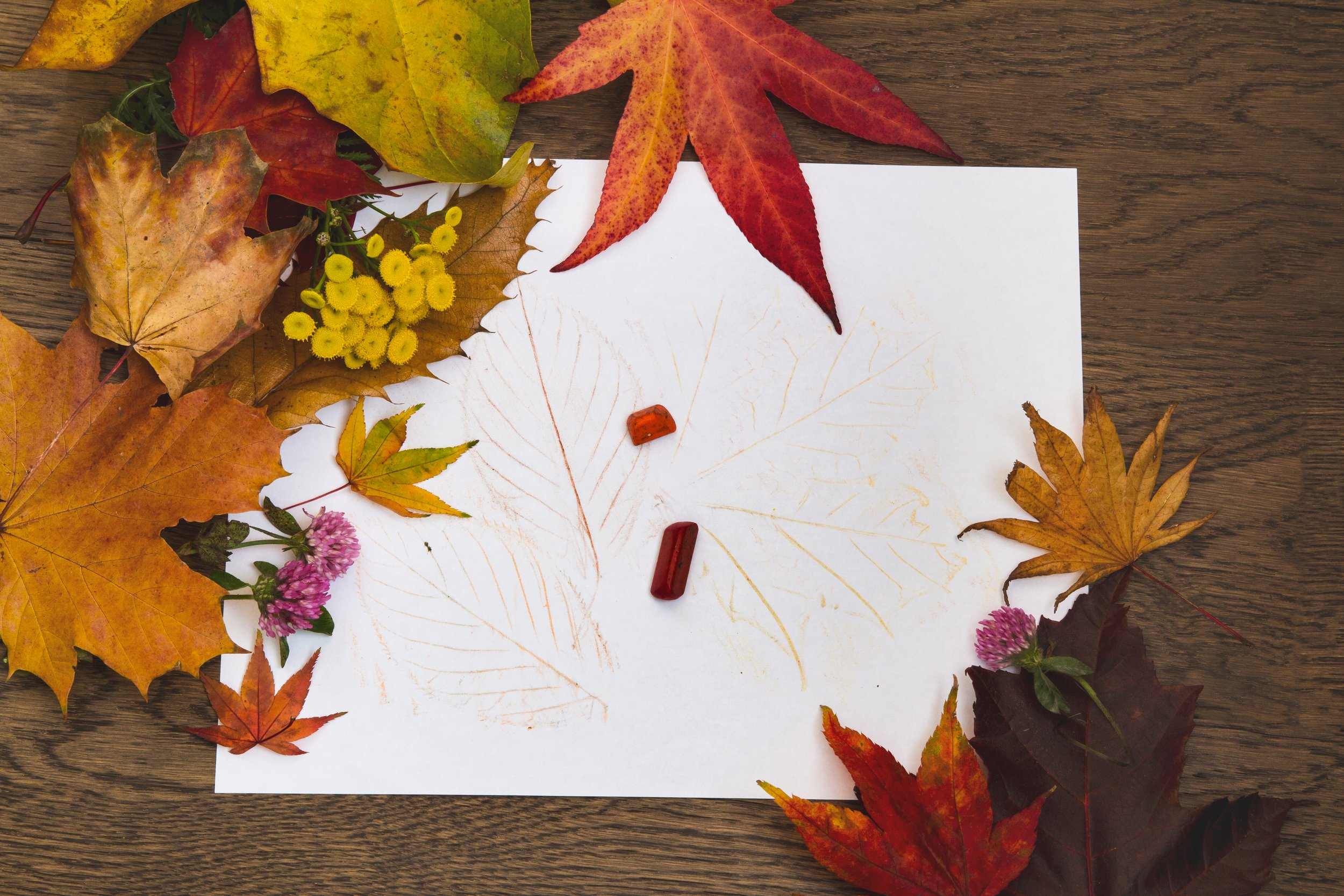
Nature Walk Leaf Rubbings
Engage children aged 4-11 in a delightful nature-inspired activity that combines the joy of a nature walk with the creativity of leaf rubbings. This simple and interactive project not only introduces children to the beauty of nature but also enhances their fine motor skills.
Materials Needed:
(You can substitute with materials you already have in your home)
1. Sketchbook or sheets of plain paper
2. Crayons (various colors)
3. Pencils
4. Sheets of thin cardboard (optional)
5. Assorted leaves collected during a nature walk
6. Masking tape or clips
7. Outdoor space or local park for a nature walk
8. Optional: Watercolor paints and brushes
Guide
Step 1: Nature Walk Exploration
Take a nature walk with your child in a local park or any outdoor space with a variety of trees. Encourage them to collect interesting leaves of different shapes and sizes.
Step 2: Set Up the Workspace
Find a comfortable and well-lit space at home. Lay out a sketchbook or sheets of plain paper. If using loose sheets, consider placing them on a thin cardboard for a firmer surface.
Step 3: Arrange the Leaves
Place the collected leaves on the sketchbook or paper. You can use masking tape or clips to secure the leaves in place, ensuring they don’t move during the rubbing process.
Step 4: Create Leaf Rubbings
Place a sheet of paper over a leaf. With a crayon or pencil on its side, gently rub over the paper's surface. Watch as the leaf's intricate details appear on the paper. Encourage your child to experiment with different colors and techniques.
Step 5: Explore Different Leaves
Repeat the process using various leaves, creating a collection of unique leaf rubbings. Discuss the different shapes, patterns, and textures each leaf offers.
Step 6: Add Pencil Details
For an extra layer of creativity, use pencils to add finer details or outlines to the leaf rubbings. This step allows children to emphasize certain features or experiment with shading.
Step 7: Optional Watercolor Enhancement
If you have watercolor paints and brushes, consider adding a touch of color to the leaf rubbings. This optional step adds a vibrant and artistic element to the creations.
Step 8: Reflect and Display
Sit down with your child to reflect on the leaf rubbings. Discuss the unique features of each leaf and the creative choices they made. Display the finished artwork in a special place at home.
Step 9: Further Exploration
Encourage ongoing curiosity about nature by discussing the types of trees the leaves came from or exploring books about leaves and trees.
This nature-inspired leaf rubbing activity not only stimulates creativity but also fosters a connection with the natural world. Enjoy the wonders of nature and art together!
